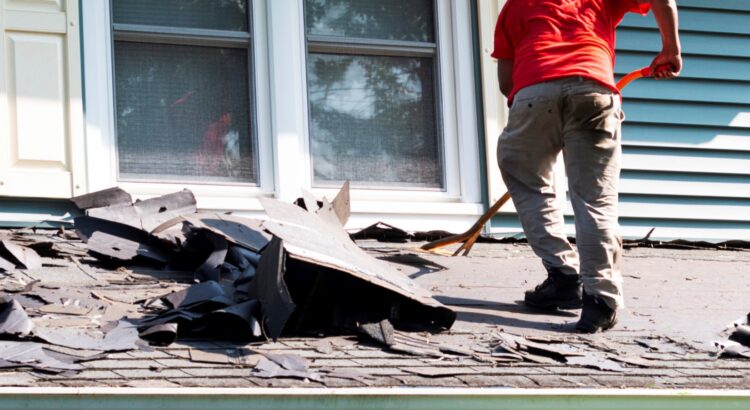A home’s roof is the primary defense against the elements. Without maintenance, minor issues can become severe, causing water intrusion and other problems like mold growth, wood rot, insulation damage and structural instability.
Residential Roof Repair Las Vegas addresses concerns like missing or damaged shingles, leaks, and ventilation issues. Regular inspections and prompt repair can prevent costly problems in the future, while increasing a home’s curb appeal and value.
Shingles are a critical component of your roof. They provide insulation, help to protect against rain and other weather elements and keep out the sun’s harmful UV rays. Damaged shingles can cause leaks and other serious problems with your home’s interior and exterior.
Regular inspections are the best way to identify and repair shingle damage. Check your roof in the spring and fall to look for signs of aging or damage, including cracked, curling, discolored or missing granules. If you suspect any of these issues, call a roofing expert right away.
Missing granules are one of the most common signs of damaged shingles. The granules help to shield your shingles from the sun’s rays, so when they are lost, it leaves the shingles vulnerable and more susceptible to sun damage. It’s important to replace any missing granules as soon as you notice them.
Curling shingles are another sign that your shingles are starting to wear down and should be replaced as soon as possible. The curved shingles are less effective at protecting your home from the elements and can allow water to seep under the shingle.
Cracking shingles can be caused by various factors, including high winds and temperature changes. The cracked shingles can leak into your home’s interior and should be replaced as soon as possible.
A leaking roof is not just a symptom of damaged shingles, it could also indicate that the supporting structure of your roof has been compromised. If you suspect that your roof has been sagging, it is important to call a professional roofing contractor for a thorough inspection and estimate.
To remove a damaged shingle, start by removing the nails that hold it in place. Use a pry bar to loosen the shingle from its neighboring shingles and then carefully lift it up. If the nail remains protruding from underneath the shingle, cut it off with a utility knife. Once the old shingle is removed, slide the new shingle into place and secure it with the roofing nails that were used on the undamaged shingles above. Be sure to apply a dab of roof cement along the joints in the shingle to seal them together and prevent water leaks.
Leaking Gutters
Gutters serve several purposes, including directing rainwater away from the roof and protecting the structure from water damage. Keeping up with regular maintenance and inspections can help prevent problems like leaky gutters. In addition, using high-quality materials and professional installation services can reduce the risk of gutter leaks. When a leak occurs, it’s important to repair it promptly to avoid expensive structural damage and potential health hazards.
The most common sign of a leaking gutter is standing water in the gutters or downspouts. This can be caused by clogs or an improperly pitched gutter system that allows water to pool in certain areas. In addition, a leaky gutter can be caused by rust or corrosion in the gutters themselves or along the joints.
Another common sign of a leaking gutter is stains on the fascia or soffit. These can be caused by water overflowing from clogged or damaged gutters, which then escapes through the soffit or fascia boards. Leaking gutters can also be caused by faulty installation, which can lead to the gutters becoming loose or misaligned.
If left untreated, a leaking gutter can lead to water damage throughout the building. This can include stains on walls, ceilings, and floors, as well as weakened structure and deteriorating building materials. In severe cases, persistent water exposure can even cause foundation damage, which can be costly to repair.
Leaking gutters are a common problem that can be easily repaired with a few simple steps. Start by positioning your ladder safely near the leaking section of the gutter. Make sure the ladder is on stable ground and that someone knows you’re working on it for added safety. Carefully remove any debris or leaves that have accumulated in the gutter to expose the area you need to work on. Next, scrape and clean the leaking joint to prepare it for sealing. Finally, apply a waterproof gutter sealant to the seams and joints to create a watertight seal. Follow the product’s instructions carefully for proper application. If you can’t find a suitable sealant, there are a number of easy-to-use patching products available that can be used to repair pinholes or small holes in the gutters.
Cracked Flashing
Flashing is a layer of thin metal pieces under roof shingles and on the joints of a roof. The flashing creates a water-resistant barrier that protects the structure of your home from leaks. Flashing is installed near chimneys, vents, and skylights, but it can also be found in valleys and corners of the roof. When flashing cracks, water leaks into the house through the roof.
Cracked flashing can result from inclement weather or physical damage. It may also happen due to poor installation or deterioration over time. In addition, it is common for flashing to corrode or rust due to exposure to moisture and harsh weather conditions.
If you spot visible cracks in your roof’s flashing, it is important to take action. If not addressed promptly, the cracks can worsen and lead to costly roof leaks.
When repairing cracked flashing, it is important to use the right type of sealant and follow manufacturer instructions. It is also important to clean the cracks thoroughly and remove any dirt or debris that might interfere with the sealing process. Once the area is cleaned, a high-quality flashing sealant can be applied with a caulking gun or putty knife.
Inspect your roof’s flashing regularly to identify and address problems as they arise. If you notice signs of leaking or see rust or corrosion, contact a professional roofer for repair.
Performing DIY roofing repairs can be expensive and hazardous. Inexperienced homeowners can make mistakes that can lead to further damage and a more expensive repair bill down the road. Professionals are highly skilled and experienced, making them better equipped to resolve complex issues and ensure a safe repair job. They can also help prevent further damage and unforeseen expenses in the future by providing advice and recommendations for a lasting solution.
Proper roof maintenance and regular inspections can minimize the risk of leaks, preserving the integrity of your home’s structure and protecting your family’s safety and comfort. Taking note of the warning signs and addressing them early can make a huge difference in keeping your property safe from structural damage, mold growth, and other costly problems.
Damaged Soffit
If a soffit is damaged, it exposes the underside of the roof to moisture and pests. This can lead to water infiltration, wood rot, and even structural damage. Repairing a soffit promptly is vital to protecting your home from costly repairs down the road.
Start by inspecting the soffit for signs of damage, such as water spots or brown stains on the exterior surface of the house. If the soffit is not completely destroyed, a thorough cleaning can usually repair it. Next, use a ladder to access the area under the roof. Use a cordless leaf blower to clear away spider webs, debris, and leaves. Be sure to wear safety goggles during this step to protect your eyes.
If the soffit is severely damaged, it may need to be replaced altogether. A professional can help assess the damage and determine whether a simple replacement or an entire new section is needed.
A damaged soffit can also lead to mold, mildew, and poor attic ventilation. A soffit is designed to vent hot, humid air out of the attic, but if it becomes blocked, it can cause condensation and moisture build-up that can damage the rafters, fascia boards, and other areas of the roofline.
In addition to preventing water infiltration, the soffit can be used to install venting that can reduce your energy costs. Proper ventilation prevents heat from building up in the attic, which can cause the attic insulation to deteriorate and lower the overall efficiency of your home.
To repair a damaged soffit, begin by removing any molding on the fascia or exterior wall that is attached to the soffit. Next, using a jig saw, carefully cut out the damaged soffit section and make sure to follow the grooves in the wood and remove any rotted sections. When you are finished, cut a piece of 1/4″ plywood to fit the hole and attach it. Once the patch is in place, screw it to the framing or existing soffit material and caulk any gaps or seams to prevent moisture from entering. Finally, paint the soffit to match the surrounding surfaces of the home.






